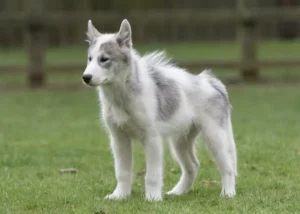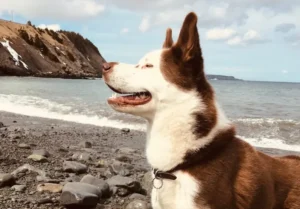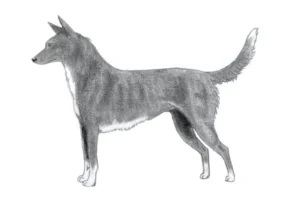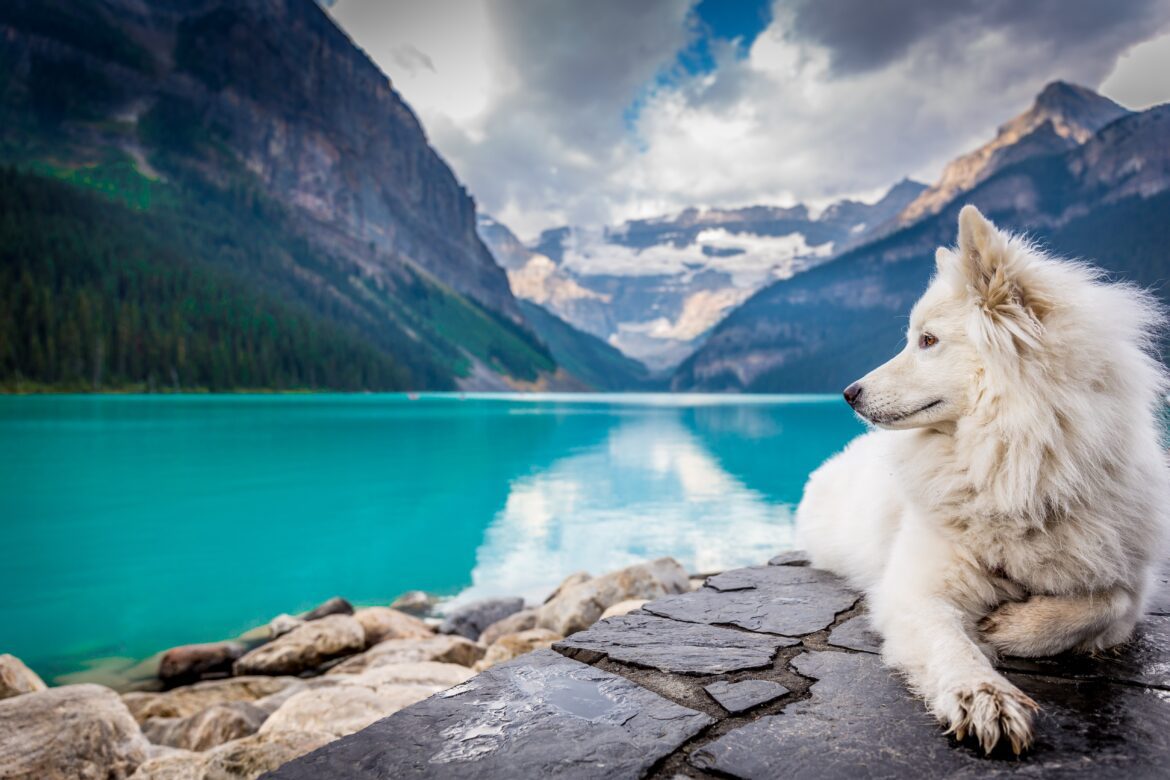Introduction
Dogs in Canada were traditionally kept and raised for specific outdoor tasks and vocations by indigenous people. If you’re in the market for a family pet, it’s important to think about how the dog’s original function relates to the role it will play in your home.
In this post, we’ll take a look at the numerous Canadian dog breeds, discussing their characteristics and tracing their ancestry. You should keep reading to find out what makes these dog breeds so special.
Canadian Inuit dog (Canadian Eskimo dog)
It’s estimated that around 2,000 years ago, the Thule civilization of Inuit people in arctic Canada was doing rather well with the help of their Canadian Inuit Dogs.
Pups defended their communities, gathered food for all, and pulled sled for transportation. There may be as few as 279 Canadian Inuit Dogs left today.
They are quite strong and pack-oriented; thus, these dogs aren’t a good choice for households with young children. If they have room to roam and play, they can develop into kind, devoted pets.
The Canadian Kennel Club (CKC), the Canadian Eskimo Dog Research Foundation (CEDRF), and the Canadian government all played key roles in bringing the breed back from the brink of extinction.

Image Credit: Getty Images
Hare Indian dog
Originating in the United States and Canada in the 18th century, the Hare Indian Dog is a breed with a long and rich past. Origin theories are plentiful. In 1984, however, scientists tested the dogs’ DNA and determined that they were a combination of coyotes, wolf dogs, and domesticated dogs.
When compared to other members of the spitz family, these puppies appeared just like their parents. They’ll always have the large, pointed ears of the Canadian Eskimo dog. The muzzle will likely be longer than average.
These canines were developed to be hunting companions, so it comes as no surprise that they are hardy and flexible. But as the tactics of hunting evolved with the development of weapons and weaponry, the Hare Indian Dogs became obsolete and died out.
Labrador Husky
The exact origin of the Labrador Husky, a Spitz-type dog bred in Canada as a sled and companion dog, is uncertain. Although it may sound like a Labrador Retriever and a Siberian Husky had a baby, this uncommon dog is actually its own breed within the Spitz family and is a type of sled dog.
Labrador Huskies are clever, social, and self-assured dogs that need regular exercise and mental stimulation to avoid becoming bored. Their ancestors were working dogs in the frozen north of North America. You should think about this breed’s excessive and constant shedding before bringing it home. The average lifespan for these dogs is 10–13 years.

Image Credit: Getty Images
Labrador Retriever
While it may have a name that suggests otherwise, this breed actually hails from Newfoundland, not Labrador. The Labrador was originally bred as a water dog to help fishermen with retrieves of both ducks and fish. Their fur is hydrophobic, and their webbed paws make them well-suited for the duty of swimming.
Some wealthy English aristocrats in the early 1800s were responsible for reintroducing Labrador retrievers into England. The breed became known as Labrador dogs once that name was given to them. Additionally popular amongst American farmers and hunters, this breed was officially recognized by the American Kennel Club (AKC) in 1917.
It goes without saying that Labrador Retrievers are the most popular dog breed in the world. There is no other breed that comes close to matching their popularity in the United States. Because of this, they have become more well-known outside of Canada than any other breed of dog.

Image Credit: Getty Images
Landseer
Landseers can trace their ancestry back to Newfoundland, as can many other canine breeds in Canada. They are said to be connected to Newfoundland by some kennel clubs. However, Landseers are not just any dog; they are a separate breed thanks to deliberate breeding efforts in the Netherlands, Switzerland, and Germany.
During the 1800s, a huge number of Landseers were brought in from Canada. The breed was maintained throughout both World Wars, but it wasn’t until afterward that it was formally recognized as the Landseer European Continental Type (ECT).
So, several dog registries started officially acknowledging Landseers as their own breed (apart from the AKC). The Landseers, with their distinctive black and white coats, were rumored to have descended from water dogs and shepherds.

Image Credit: Getty Images
Newfoundland
It’s possible that Newfoundland can be traced back to dogs kept by Indigenous peoples, or it could be related to dogs introduced by the Vikings about the year 1,000 AD. Basque and Portuguese fishing ships likely brought dogs to the island and interbred with the native population. The large black canines were a major draw for British tourists, who brought several of the dogs back to the country.
These large, fluffy dogs are known for being great with kids, protecting the home, and swimming. Sir Edwin Landseer painted a black and white species called the Landseer in his classic picture, A Distinguished Member of the Humane Society.

Image Credit: Getty Images
Nova Scotia Duck Tolling Retriever
The fact that Nova Scotia Duck Tolling Retrievers were once uncommon in the United States contributes to the fact that they are one of the most expensive dog breeds available. But in Nova Scotia, a province of Canada, they were plentiful in the nineteenth century, known as little river duck dogs and were widely employed for bird hunting.
These lively puppies, also called Tollers, would act like foxes in order to drive the ducks away. Today, they are cherished for their joyful personalities and because they make great pets.

Image Credit: Getty Images
Salish Woolly Dog
Since Salish Woolly Dogs are extinct Canadian breeds and there are so few recordings of them, it’s important to note that all of the data we know about them is based on educated guesses. Salish Woolly Dogs were medium-sized canines, easily distinguished by their long white coats and curly-cue tails, and are now considered to be close relatives of American Eskimo Dogs and Japanese Spitzes. Along the western coast of Canada, these packs of 12–30 dogs thrived on a diet of raw salmon.
Coast Salish women would cut down these garments several times a year to utilize the wool-like fur to manufacture blankets. It is believed that Salish Woolly spent the summer months on their own on remote islands in the Vancouver Island and San Juan Island chains.
Canadian dog breeds, such as the Salish Woolly, are known for their fierce independence. When a Salish Woolly Dog puppy died, it was given a wool blanket to be buried in because the Coast Salish people valued the wool so highly.
The Salish Woolly Dog population crashed in the 1800s, when European settlers drove out indigenous communities across Canada and when expensive machine-made blankets from England became all the rage.

Image Credit: Getty Images
Seppala Siberian Sled Dog
Seppala Siberian Sled dog is an ancient Canadian dog breed, with records dating back to the early 1900s. They descended from the Northeastern Siberian sled dogs, and they were developed by the famous dog driver Leonhard Seppala.
The Seppala shares the traits of other sled dogs in that it is powerful, quick, and incredibly hardy. Just what they needed to run for hours.
There was a time when people thought the Seppala Siberian Sled dog and the Siberian Husky were the same things. Canadian agriculture officials did not recognize Seppalas as a distinct dog breed until the late 1990s when they saw them as a “developing breed.”

Image Credit: Getty Images
Tahltan bear dogs
We’re taking a stab in the dark at identifying yet another extinct Canadian dog breed. The Kaska, Tagish, Tahltan, Tlingit, and Sekani people relied heavily on these dogs during hunts. Although hardly bigger than a Fox Terrier individually, they worked together to kill bears.
The Tahltan Bear Dog would work in teams, with one dog distracting the bear while the others ambushed it from behind. This strategy was particularly useful in the deep snow when the bear found it difficult to walk, yet the dogs played carefree.
It is not known for sure what caused their extinction, but possible causes include a canine distemper outbreak in the 1940s, the substitution of firearms for dogs in hunting, or a combination of these and other factors brought about by European settlement in the 19th and 20th centuries.
According to the Canadian Kennel Club, there were only six Tahltan Bear Dogs surviving in 1975, and the final dog died in 1979, the same year the Canadian Kennel Club removed the breed, after more than a quarter of a century of no new registrations, from its list of recognized breeds. And with this, the courageous little Tahltan Bear Dog – the world’s most recently extinct breed of dog – vanished. ”

Image Credit: Getty Images
In the end
Which Canadian dog breed do you love the most, and why? Tell us in the comments! Please do get in touch with us; we value your feedback.
FAQS
-
What is the rarest dog breed in Canada?
It is believed that the Canadian Eskimo Dog, also known as the Canadian Inuit Dog, is one of the oldest and rarest dog breeds.
-
What is the cutest dog in Canada?
For nearly two decades, Labrador retrievers have been considered one of Canada’s cutest dog breeds.
-
How many breeds does the Canadian Kennel Club recognize?
The CKC recognizes 187 breeds, which are sorted into seven groups.
